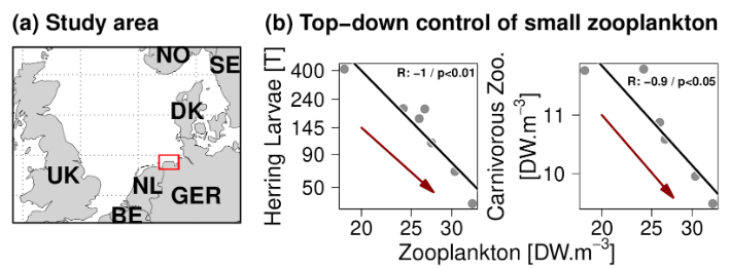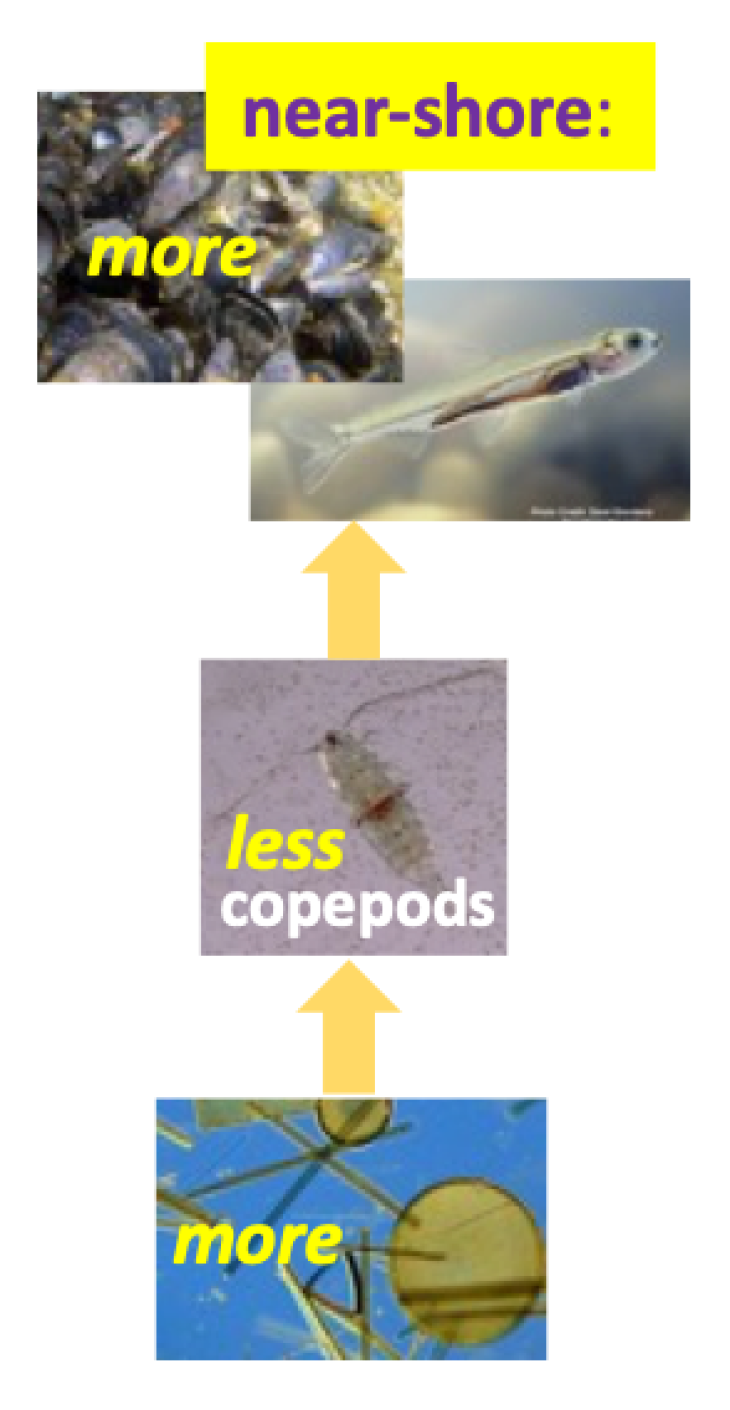Trophic cascading
We use trait-based models and data analysis to understand the ecological functioning of coastal systems. Traits such as body size define interactions between predators and prey, but also between competitors. We investigate the control mechanisms between trophic levels from nutrients and phytoplankton up to fish.

Trophic relationships are reconstructed from trait-based modeling (Wirtz, 2012; García-Oliva and Wirtz, 2022) and the “who eats what” relationships developed therein. This approach allows us to have a more precise resolution of trophic interactions, which is not only based on taxonomic groups (e.g. phytoplankton and zooplankton), but also on trait-based relations, including the variable extent of mixotrophy. Recently, we found specialization as a size-independent master trait for trophic relationships. Using specialization greatly improves species- or former trait-based description reconstruction of complex food-web structure (García-Oliva and Wirtz, Nature Eco Evo 2025)
Annual means of zooplankton dry weight (DW) measured by the NLWKN monitoring program are compared to carnivorous (gelatinous) zooplankton and herring larvae. The latter was estimated from adult landings the previous year.

Our trait-based studies better track the potential impact of food-web cascading - with large consequences for the management of coastal ecosystems. For example, coastal zooplankton is controlled by herring larvae and gelatinous zooplankton (Fig.1). Removing control by top predators would increase concentrations of zooplankton, which in turn cascades down to phytoplankton production (see also Xu et al 2022, Wirtz 2019, or Krishna et al, subm).
Ongoing projects include collaborations with the NLWKN. Here. we study eutrophication and the control of phytoplankton production in the East Frisian Wadden Sea, Southern North Sea, by higher trophic levels. Thus, we investigate why coastal production is only wealy correlated to nutrient riverine input, and how top trophic levels may influence phytoplankton production. A second application is the investigation of how changing turbidity and light levels affect coastal top-down cascading with the JPI project ALANIS. Light determines visual predation of fish on plankton and on smaller fish.
Publikationen (KSE)
